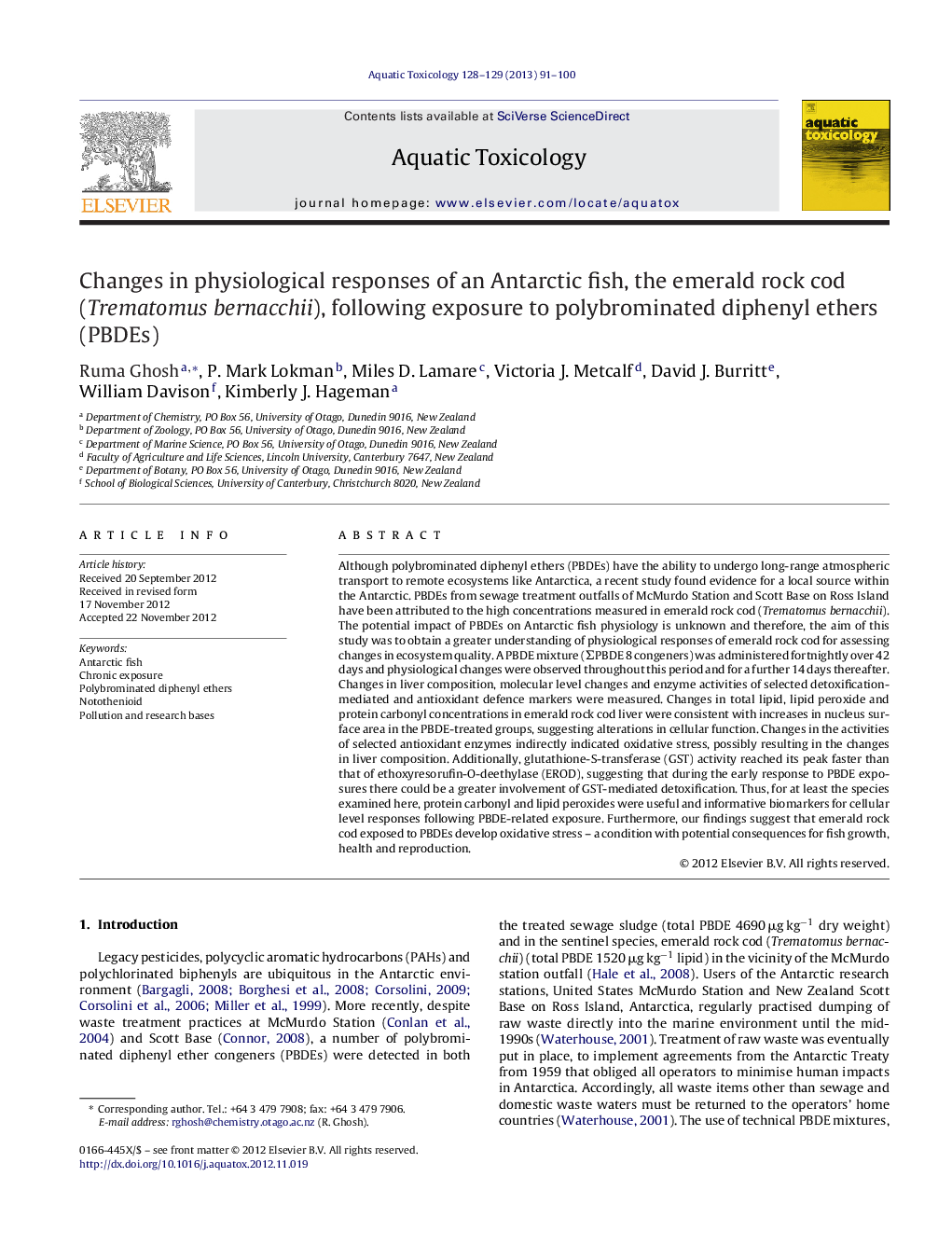| کد مقاله | کد نشریه | سال انتشار | مقاله انگلیسی | نسخه تمام متن |
|---|---|---|---|---|
| 4529533 | 1625968 | 2013 | 10 صفحه PDF | دانلود رایگان |

Although polybrominated diphenyl ethers (PBDEs) have the ability to undergo long-range atmospheric transport to remote ecosystems like Antarctica, a recent study found evidence for a local source within the Antarctic. PBDEs from sewage treatment outfalls of McMurdo Station and Scott Base on Ross Island have been attributed to the high concentrations measured in emerald rock cod (Trematomus bernacchii). The potential impact of PBDEs on Antarctic fish physiology is unknown and therefore, the aim of this study was to obtain a greater understanding of physiological responses of emerald rock cod for assessing changes in ecosystem quality. A PBDE mixture (ΣPBDE 8 congeners) was administered fortnightly over 42 days and physiological changes were observed throughout this period and for a further 14 days thereafter. Changes in liver composition, molecular level changes and enzyme activities of selected detoxification-mediated and antioxidant defence markers were measured. Changes in total lipid, lipid peroxide and protein carbonyl concentrations in emerald rock cod liver were consistent with increases in nucleus surface area in the PBDE-treated groups, suggesting alterations in cellular function. Changes in the activities of selected antioxidant enzymes indirectly indicated oxidative stress, possibly resulting in the changes in liver composition. Additionally, glutathione-S-transferase (GST) activity reached its peak faster than that of ethoxyresorufin-O-deethylase (EROD), suggesting that during the early response to PBDE exposures there could be a greater involvement of GST-mediated detoxification. Thus, for at least the species examined here, protein carbonyl and lipid peroxides were useful and informative biomarkers for cellular level responses following PBDE-related exposure. Furthermore, our findings suggest that emerald rock cod exposed to PBDEs develop oxidative stress – a condition with potential consequences for fish growth, health and reproduction.
► The potential impact of PBDEs on Antarctic fish physiology was investigated.
► Fish were forced-fed a PBDE mixture (ΣPBDE 8 congeners) fortnightly over 42 days.
► Changes in liver composition, enzyme activities and molecular level changes of selected detoxification-mediated and antioxidant defence markers were measured.
► Changes in total lipid, lipid peroxide and protein carbonyl concentrations in emerald rock cod liver were consistent with increases in nucleus surface area.
► Changes in the activities of selected antioxidant enzymes indirectly indicated oxidative stress.
Journal: Aquatic Toxicology - Volumes 128–129, 15 March 2013, Pages 91–100